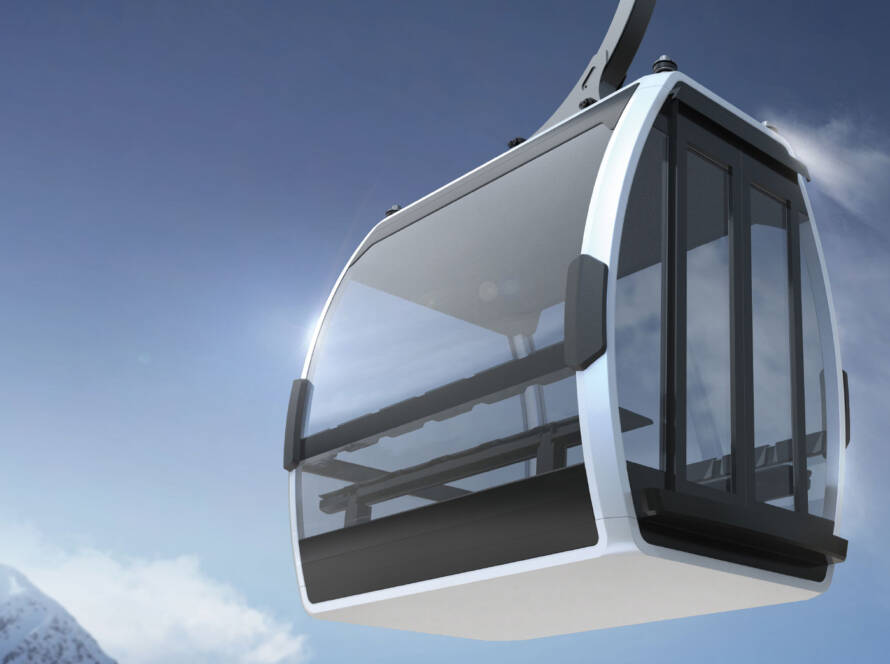When it comes to vegetation management for American ski slopes, there is a right way and wrong way. This is the view of Dr. Jennifer Burt, a plant scientist with the University of California, Davis.
She undertook a landmark study of slope management techniques where she discovered that cleared runs differ greatly from graded ones. Her view is that cleared slopes are lot more like forest and continue to contribute to the natural eco-system.
Unlike graded runs, cleared sites leave seed banks intact and small shrubs remain undamaged. As well, the top layers of soil are left to support plant life. The result is a more robust and diverse nature on these ski slopes.
In the U.S., many operators prefer grading to clearing because it offers a more level base and this can mean slopes open earlier with less snow. However, citizen groups, environmental organizations and industry bodies such as the National Ski Areas Association (NSAA) suggest operators consider the benefits of clearing vegetation through greener thinking.
Here, the NSAA recognizes the importance of responsible management of both forests and vegetation. Their view is that healthy ecosystems allow for greater public recreation opportunities.
The NSAA offers 15 solutions for operators:
- Inventory and monitor forest and vegetative resources
- Adopt vegetative management plans
- Minimize the removal of trees through the careful siting and design of trails
- Use over-snow skidding to remove logs for new runs during times of sufficient snow cover
- Trim branches or top trees instead of removal where possible
- Use aerial logging where economically feasible
- Employ practices to control invasive or noxious weeds
- Remove dead and diseased trees, with consideration to habitat value, to promote healthy forests and public safety
- Revegetate roads that are no longer used
- Revegetate disturbed areas with native plant species and grasses, recognizing that faster growing, non-native species may be needed to address erosion
- Revegetate disturbed areas as quickly as possible following disturbances
- Limit disturbance to vegetation during summer activities
- Assess the role of forest stands in reducing greenhouse gases
- Provide signage to inform guests of sensitive vegetation areas
- Use traffic control measures, such as rope fences, on those sensitive vegetation areas
The right equipment for the job
Alamo Industrial, a division of the Alamo Group, has been supplying mowers to government agricultural and commercial turf markets for nearly 50 years.
“We are one of the world’s largest manufacturers of tractor-mounted mowers, brush-cutters and other similar equipment made for right-of-way clearing, roadside vegetation management and grounds maintenance,” said Ian Burden, president of the Texas-based Alamo Group. He says Alamo Industrial has a wide array of products including rotary, flail and sickle bar mowers.
“Our boom mowers are offered with many types of cutting heads to accommodate the challenges our customers face,” he said, noting that their specialty products include remote control equipment, systems that assist with mowing needs in areas that standard equipment is unable to reach.
Alamo products have been demonstrated at locations such as Powder Horn and Copper Mountain as well as a host of others. According to Burden, operators at these sites have been able to cut vegetation once in the late summer or autumn to get plants to around six inches.
“This allows for an earlier opening,” he said, noting that no matter what the job entails they have equipment to make it a lot easier. For example, they offer a “boom” attachment for tractors to get at low overhanging branches. “Operators can just clip trees rather than remove them. This is better for soil erosion on the mountain.”
Alamo also offers a remote control cutter that can be used on slopes up to 60 degrees and can be operated from distances of 1,000 feet. “This is European technology used in the Alps. We have taken it further by making these remote control cutters more versatile with a variety of attachments.”
Burden comments that erosion is easy to get going and very hard to stop once the soil is broken. Alamo manufacturers a 48-inch wide tracked vehicle that is gentle on soil while carrying heavy loads. “Because of the width, the weight is spread out,” he said. “This means less possibility of erosion and a better slope year in and year out.”
Safety is another key point. “Workers are on difficult terrain when they are doing vegetation management and they have to pay attention. In Europe, there are stronger guidelines regarding how safe vegetation management is achieved. We are seeing more U.S. operators start to really get on board with better techniques and equipment choices. This is good to see because vegetation management is a serious concern that can really impact your ski resort business,” he said.
![[image placeholder]](https://www.snowopsmag.com/wp-content/uploads/2023/09/placeholder@2x-890x664.png)
